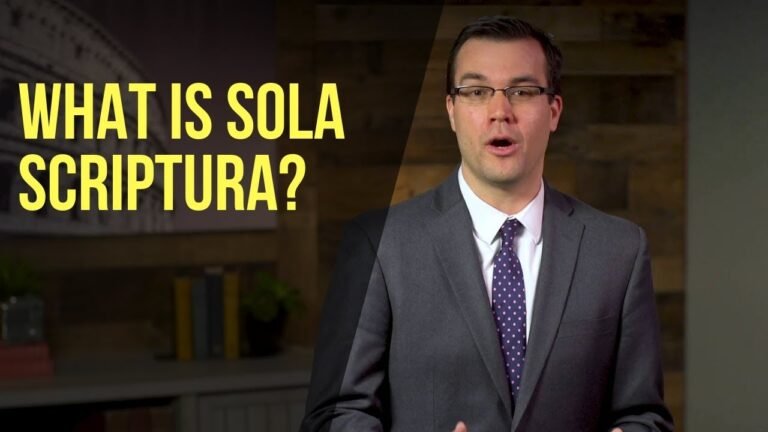The Legacy of Leo IX: A Reforming Pope
Pope Leo IX, a pivotal figure in the history of the Catholic Church, reigned from 1049 to 1054 and is best known for his efforts to reform the church and strengthen its authority. His papacy marked a turning point in the relationship between the Eastern and Western Christian traditions, setting the stage for the Great Schism of 1054. By championing clerical celibacy and combating simony, Leo IX sought to restore moral integrity to the clergy and enhance the church’s spiritual mission. His legacy continues to resonate, highlighting the enduring influence of leadership in shaping religious history.
What were Leo IX’s major contributions to the Church?
Leo IX’s major contributions include promoting Church reforms, enhancing papal authority, and fostering relations with Eastern Christianity, significantly influencing the future of the Catholic Church.
What is Pope Leo IX known for?
Pope Leo IX, reigning from 1049 to 1054, is renowned for his pivotal role in shaping the course of church history during the Middle Ages. His papacy was marked by significant reforms aimed at combating corruption within the clergy and enhancing the moral authority of the Church. Leo IX’s commitment to these reforms laid the groundwork for a more unified and powerful papacy, influencing the dynamics of Christianity in Europe.
However, it is his involvement in the events leading to the Great Schism of 1054 that defines his legacy. This schism marked a profound division between the Catholic Church in the West and the Eastern Orthodox Church, a turning point that reshaped the religious landscape of Europe. Leo IX’s actions during this period not only highlighted the growing rift but also underscored the complexities of ecclesiastical authority and regional power struggles, making him a key figure in the history of Christianity.
When did Pope Leo IX get excommunicated?
Pope Leo IX, who passed away on April 19, 1054, was never excommunicated; rather, it was his Papal Legate, Cardinal Humbert of Silva Candida, who took a significant step by laying a Bull of Excommunication against Michael Cerularius, the Patriarch of Constantinople. This dramatic act occurred on July 16, 1054, at the altar of Hagia Sophia, but since Leo IX was already deceased, the Legate’s action lacked the authority of the Pope. This incident marked a pivotal moment in the schism between the Eastern and Western Christian churches, emphasizing the complexities of authority and communication in the early medieval period.
What could have occurred if Leo IX had not excommunicated the bishop of Constantinople?
Had Leo IX chosen not to excommunicate the bishop of Constantinople, the course of church history could have been significantly different. A united church might have emerged, fostering stronger ties between the Eastern and Western branches of Christianity. This potential unity could have diminished the papal authority in Rome, leading to a more collaborative approach to church governance and potentially averting the Great Schism that ultimately divided Christianity. The ripple effects of such a decision might have shaped not only religious practices but also political alliances and cultural exchanges across Europe and beyond.
Transforming the Church: Leo IX’s Vision for Reform
Pope Leo IX emerged as a pivotal figure in the 11th century, championing a vision of reform that sought to revitalize the Church and restore its moral integrity. His commitment to combating simony and clerical marriage reflected a deep desire to elevate the spiritual authority of the clergy and ensure that the Church remained a beacon of righteousness. Leo IX’s emphasis on the importance of education and the need for a disciplined clergy fostered a renewed sense of purpose, encouraging a more active engagement with the faithful. Through his bold initiatives and unwavering dedication, he laid the groundwork for a reformed Church that would not only address the challenges of his time but also inspire generations to come.
A New Era: Leo IX and the Path to Reform
The pontificate of Leo IX marked a pivotal turning point in the history of the Catholic Church, ushering in a new era defined by a commitment to reform and renewal. Ascending to the papacy in 1049, Leo IX recognized the need to address pervasive issues such as clerical corruption and moral decay within the Church. His vision was clear: to restore the integrity of the clergy and reinforce the Church’s spiritual authority. By promoting a return to spiritual values, Leo IX sought to align the Church’s practices with its foundational teachings, setting the stage for significant reforms.
One of Leo IX’s most impactful strategies was his emphasis on elevating the moral standards of the clergy through education and accountability. He actively engaged in synods and councils that established clear guidelines for clerical conduct, encouraging bishops to take a more active role in overseeing their dioceses. This approach not only aimed to eradicate abuses but also fostered a culture of responsibility and transparency within the Church. Leo IX’s reformative actions laid the groundwork for a more disciplined and pious clergy, essential for regaining the trust of the faithful.
Furthermore, Leo IX championed the idea of papal supremacy, asserting the Pope’s authority over all bishops and establishing a framework for Church governance that emphasized unity and coherence. His efforts to strengthen the papacy’s position were fundamental in countering local abuses and regional power struggles that threatened the integrity of the Church. By fostering alliances with influential leaders and promoting the importance of a unified Church, Leo IX not only transformed the papacy but also set the Church on a path toward enduring reform, ultimately shaping its future for generations to come.
The Pope Who Changed Tradition: Leo IX’s Impact
Pope Leo IX, who ascended to the papacy in 1049, was a transformative figure in the history of the Catholic Church. He championed the reform movement that sought to eliminate corruption and promote clerical celibacy, setting a new standard for the moral and spiritual life of the clergy. Leo’s dedication to these reforms not only strengthened the authority of the papacy but also laid the groundwork for the Investiture Controversy, a pivotal conflict between church and state. His insistence on the independence of the church from secular powers resonated throughout Europe, marking a significant shift in the relationship between religion and governance.
Leo IX’s impact extended beyond administrative reforms; he also fostered ecumenical dialogue and sought to bridge divisions within Christianity. His initiatives to mend the rift with the Eastern Orthodox Church, though ultimately unsuccessful, demonstrated a commitment to unity that was groundbreaking for his time. By promoting a vision of a unified Christendom, Leo IX not only shaped the direction of the church but also inspired future leaders to pursue reconciliation and collaboration across denominational lines. His legacy endures as a testament to the power of visionary leadership in transforming tradition and fostering a more cohesive spiritual community.
Reform in Action: The Legacy of Leo IX
Leo IX’s papacy marked a pivotal turning point in the history of the Catholic Church, as his commitment to reform reshaped its spiritual landscape. Ascending to the papacy in 1049, he championed the cause of clerical celibacy, aimed at curbing the corruption rampant among the clergy. His efforts to purify the Church were not just administrative; they ignited a movement that emphasized moral integrity and ecclesiastical independence. By fostering connections with emerging religious orders, such as the Benedictines, Leo IX revitalized the Church’s mission and established a lasting framework for future reforms.
The legacy of Leo IX extends beyond his immediate reforms, influencing the broader ecclesiastical and political dynamics of medieval Europe. His dedication to combating simony and promoting education among clergy laid the groundwork for a more principled Church, one that sought to align itself with the ideals of the Gospel. Additionally, Leo IX’s confrontations with secular powers underscored the Church’s growing authority and its role in shaping societal norms. His papacy not only addressed the challenges of its time but also set a precedent for future leaders, ensuring that the call for reform would resonate throughout the ages.
Pioneering Change: Leo IX’s Lasting Influence
Pope Leo IX, a transformative figure in the 11th century, revolutionized the papacy by promoting reform and strengthening the Church’s authority. His commitment to addressing corruption within the clergy and advocating for clerical celibacy set a precedent that would shape the future of the Catholic Church. Leo IX’s emphasis on the importance of papal authority over local bishops not only centralized power but also laid the groundwork for the Church’s role in European politics. His efforts to foster unity among Christians and engage in dialogue with the Eastern Orthodox Church highlighted his visionary approach, ultimately influencing the course of Christianity for centuries to come and inspiring future leaders to pursue reform and unity.
Leo IX’s papacy marked a pivotal moment in the history of the Catholic Church, characterized by a commitment to reform and a vision for unity. His efforts to strengthen the Church’s moral authority and his embrace of a more active role in political matters laid the groundwork for future papal influence. By championing the cause of the poor and advocating for clerical reform, Leo IX not only reshaped the Church’s internal dynamics but also set the stage for the broader socio-political changes of the medieval era. His legacy endures, reminding us of the enduring impact of visionary leadership in times of transformation.







